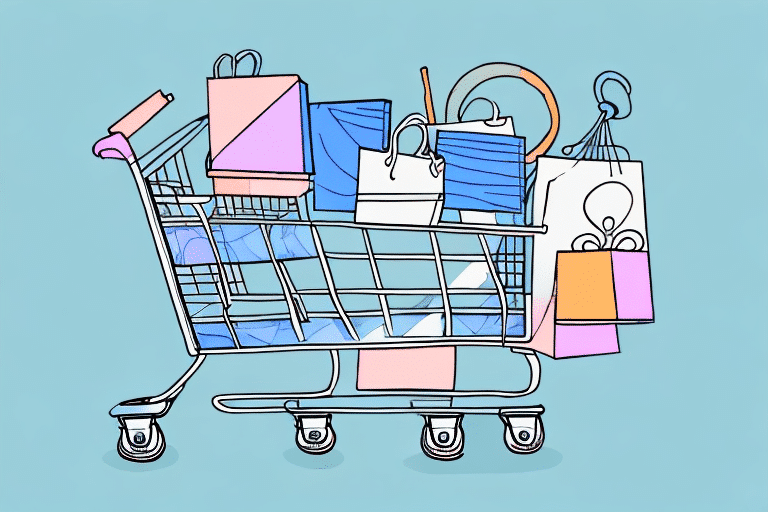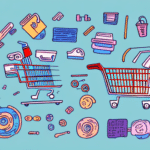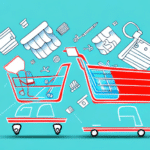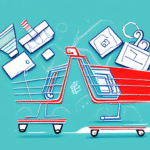7 Creative Abandoned Cart Code Ideas to Boost Your Ecommerce Sales
Abandoned carts are a significant challenge for ecommerce store owners. It's discouraging to witness potential customers leave your site without finalizing their purchases. Fortunately, there are strategies to recover these lost sales, and one effective method involves using abandoned cart codes.
Understanding the Impact of Abandoned Carts on Ecommerce
Abandoned carts pose a substantial problem for ecommerce stores. According to a study by Baymard Institute, the average cart abandonment rate stands at 69.23%. This implies that for every ten customers adding items to their shopping cart, only three complete the purchase.
The reasons behind cart abandonment are varied, including unexpected shipping costs, a complicated checkout process, security concerns, or customers simply getting distracted and forgetting to finalize their purchase. Addressing these issues is crucial for ecommerce stores to recover significant potential revenue.
Common Reasons for Cart Abandonment
- Unexpected shipping costs
- Lengthy or complicated checkout processes
- Concerns about website security
- Difficulty in navigating the site on mobile devices
- Lack of multiple payment options
Effective strategies to reduce cart abandonment include offering free shipping, simplifying the checkout process, and providing clear and transparent information about pricing and security measures. Additionally, optimizing your website for mobile devices is essential, as more consumers are shopping via smartphones and tablets.
The Psychology Behind Abandoned Carts
Understanding the psychological factors that lead to cart abandonment can help in crafting effective recovery strategies. Often, customers add items to their cart with the intention to purchase but may become uncertain or overwhelmed during the checkout process.
Creating a Sense of Urgency and Scarcity
To combat uncertainty, create a sense of urgency and scarcity. Implementing limited-time discounts, reminding customers of low inventory levels, or highlighting exclusive product availability can encourage customers to complete their purchases.
Transparency in Costs
Unexpected costs, such as high shipping fees or hidden taxes, can deter customers from finalizing their purchases. Being transparent about all costs upfront and offering options like free shipping or a shipping calculator can significantly reduce abandonment rates.
Leveraging Abandoned Cart Codes for Increased Sales
Abandoned cart codes serve as incentives to encourage customers to return and complete their purchases. These codes typically offer discounts or other benefits, providing customers with a compelling reason to finalize their transactions.
Types of Abandoned Cart Codes
- Discount Codes: Offer a percentage or fixed amount off the total purchase.
- Free Shipping: Eliminate shipping costs to make the purchase more attractive.
- Buy One Get One (BOGO) Offers: Encourage larger purchases by providing an additional item for free or at a reduced price.
By offering these incentives, you not only encourage customers to return but also gain valuable insights into shopping behaviors. Tracking which codes are most effective can help refine your marketing strategies.
Personalizing Abandoned Cart Emails
Personalization is key to the success of abandoned cart recovery efforts. Tailoring emails to individual customers increases the likelihood of engagement and conversion.
Effective Personalization Techniques
- Use the Customer’s Name: Personalized greetings make the email feel more personal and less generic.
- Reference Specific Products: Mentioning the exact items left in the cart reminds customers of what they’re missing.
- Customize the Offer: Tailor discounts based on the customer’s purchase history or the value of their abandoned cart.
Timing is also crucial. Sending abandoned cart emails within 24 hours of cart abandonment ensures the items are still fresh in the customer's mind without appearing pushy.
Best Practices for Crafting Abandoned Cart Emails
To maximize the effectiveness of your abandoned cart emails, adhere to the following best practices:
1. Compelling Subject Lines
Your subject line should grab attention and entice the recipient to open the email. Examples include:
- "Oops! You left something behind."
- "Complete your purchase and save 10%!"
- "Your cart is waiting for you."
2. High-Quality Product Images
Including clear images of the abandoned products serves as a visual reminder and reinforces the desire to complete the purchase.
3. Clear Call-to-Action (CTA)
Make it easy for customers to return to their cart with a prominent CTA button, such as "Complete Your Purchase" or "Return to Cart."
4. Optimize for Mobile Devices
Ensure that your emails are mobile-friendly, as a significant portion of users will view them on smartphones or tablets.
Utilizing Urgency and Scarcity Tactics
Implementing urgency and scarcity can effectively prompt customers to act quickly:
Time-Limited Offers
Highlight that the discount or offer is available for a limited time to encourage immediate action.
Low Inventory Alerts
Inform customers when stock is running low on popular items to create a fear of missing out (FOMO).
Countdown Timers
Including countdown timers in your emails can visually emphasize the limited time available to take advantage of the offer.
While these tactics are effective, it's essential to use them authentically to avoid overwhelming or pressuring customers, which can negatively impact your brand's reputation.
Implementing Social Proof to Recover Abandoned Carts
Social proof leverages the experiences of other customers to build trust and encourage conversions:
Customer Reviews and Testimonials
Showcase positive feedback from other customers to reassure potential buyers about the quality of your products and services.
Popularity Indicators
Labels such as "Best Seller" or "Most Popular" can highlight the desirability of specific products, motivating customers to complete their purchases.
User-Generated Content
Featuring photos or videos of customers using your products fosters a sense of community and authenticity, making your offerings more relatable.
A/B Testing Your Abandoned Cart Strategies
Continuous optimization is crucial for maximizing the effectiveness of your abandoned cart recovery efforts. A/B testing allows you to experiment with different elements to determine what resonates best with your audience.
Elements to Test
- Subject Lines: Experiment with different wording and tones to see which yields higher open rates.
- Incentives: Test various types of discounts or offers to identify what drives more conversions.
- Email Timing: Send emails at different intervals post-abandonment to determine the optimal timing for engagement.
- Personalization Levels: Vary the degree of personalization to see how it affects response rates.
By analyzing the results of these tests, you can refine your strategies to improve recovery rates and increase ecommerce sales effectively.
Tracking and Analyzing Abandoned Cart Email Campaigns
Monitoring the performance of your abandoned cart email campaigns is essential for ongoing success:
Key Metrics to Track
- Open Rates: Measure how many recipients are opening your emails.
- Click-Through Rates (CTR): Track the percentage of recipients clicking on links within the email.
- Conversion Rates: Determine how many of those clicks result in completed purchases.
- Revenue Generated: Assess the financial impact of your abandoned cart recovery efforts.
Using tools like Google Analytics or specialized email marketing platforms can provide detailed insights into these metrics, allowing you to make data-driven decisions to enhance your strategies.
Avoiding Common Mistakes with Abandoned Cart Codes
While abandoned cart codes can be highly effective, avoiding common pitfalls is crucial:
1. Overly Generous Discounts
Offering too steep a discount can erode profit margins and condition customers to wait for discounts before purchasing.
2. Lack of Testing and Optimization
Failing to continuously test and refine your strategies can result in suboptimal recovery rates.
3. Excessive Email Frequency
Sending too many abandoned cart emails can annoy potential customers, leading to unsubscribes or a negative perception of your brand.
Maintaining a balanced and thoughtful approach ensures that your recovery efforts are effective without alienating your customer base.
Integrating Abandoned Cart Codes with Other Marketing Channels
Enhancing your abandoned cart recovery strategy by integrating it with other marketing channels can amplify its effectiveness:
Retargeting Ads
Utilize platforms like Facebook and Google Ads to display retargeting ads featuring the items left in the cart, coupled with enticing offers or discounts.
Email Marketing
Combine abandoned cart codes with your regular email marketing campaigns to maintain consistent communication and brand presence.
Social Media Engagement
Engage with customers on social media platforms by showcasing user-generated content or running exclusive promotions for cart abandoners.
By creating a cohesive and multi-channel approach, you increase the touchpoints with potential customers, thereby enhancing the likelihood of recovering abandoned carts.
Case Studies: Successful Abandoned Cart Code Implementations
Examining real-world examples can provide valuable insights into effective abandoned cart recovery strategies:
Gymshark
Gymshark, a leading athletic apparel brand, implemented personalized abandoned cart emails with tailored discount codes. This strategy resulted in a 7.71% increase in revenue from abandoned carts within the first month of implementation.
Moosend
Moosend, an email marketing service, utilized a 10% off discount code in their abandoned cart emails. This approach led to an impressive 17.86% conversion rate from abandoned carts, demonstrating the effectiveness of well-crafted incentives.
These case studies highlight the importance of personalization and targeted incentives in recovering abandoned carts and boosting sales.
Optimizing Your Ecommerce Checkout Process
Reducing cart abandonment starts with optimizing the checkout process itself. A seamless and user-friendly checkout experience encourages customers to complete their purchases without hesitation.
Strategies for Checkout Optimization
- Simplify the Checkout Process: Minimize the number of steps required to complete a purchase.
- Offer Multiple Payment Options: Provide a variety of payment methods to cater to different customer preferences.
- Transparent Shipping Costs: Clearly display shipping fees and delivery times upfront to avoid surprises.
- Guest Checkout: Allow customers to complete purchases without needing to create an account.
- Security Assurance: Display security badges and use HTTPS to reassure customers about the safety of their information.
Enhancing the checkout experience not only reduces cart abandonment but also fosters customer trust and loyalty.
Future Trends in Abandoned Cart Recovery
The landscape of ecommerce is continually evolving, and so are the strategies for recovering abandoned carts. Staying ahead of emerging trends can give your business a competitive edge:
Artificial Intelligence and Machine Learning
AI and machine learning can automate and personalize abandoned cart recovery efforts by analyzing customer behavior and tailoring offers in real-time. These technologies enable more precise targeting and timely interventions, increasing the likelihood of recovery.
Loyalty Programs and Rewards
Integrating loyalty programs with abandoned cart strategies can incentivize not only the completion of the current purchase but also future engagements. Rewarding customers for their loyalty encourages repeat business and fosters long-term relationships.
Omnichannel Integration
Providing a seamless experience across multiple channels—such as email, SMS, and social media—ensures that recovery efforts reach customers wherever they are most active. This integrated approach maximizes the touchpoints and improves recovery rates.
Embracing these future trends will help your ecommerce business adapt to changing consumer behaviors and technological advancements, ensuring sustained success in abandoned cart recovery.
Conclusion
Abandoned carts present a significant challenge for ecommerce stores, but with the right strategies, you can effectively recover lost sales and boost revenue. Implementing abandoned cart codes, understanding customer psychology, personalizing recovery efforts, and continuously optimizing your approach are critical components of a successful recovery strategy.
By tracking and analyzing your campaigns, avoiding common pitfalls, and integrating with other marketing channels, you can enhance your efforts to recover abandoned carts. Additionally, staying informed about emerging trends and leveraging advanced technologies will ensure that your strategies remain effective and competitive.
Ultimately, a well-executed abandoned cart recovery strategy not only increases sales but also enhances customer satisfaction and loyalty, contributing to the long-term success of your ecommerce business.




















